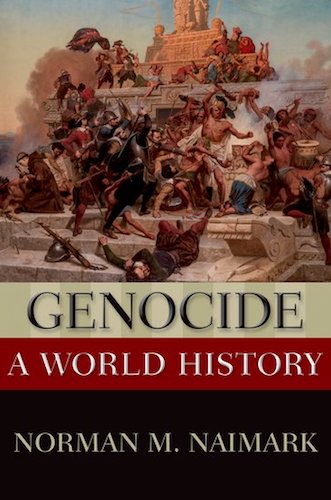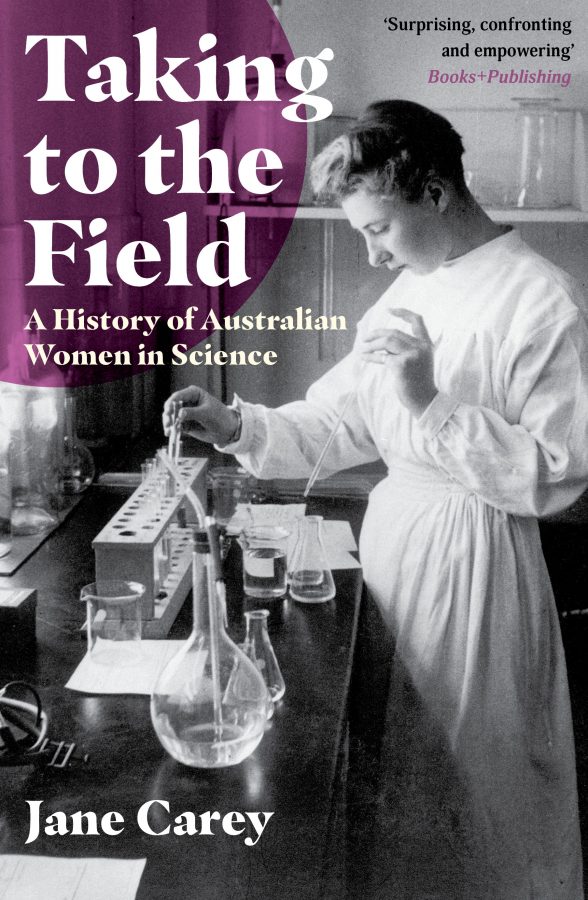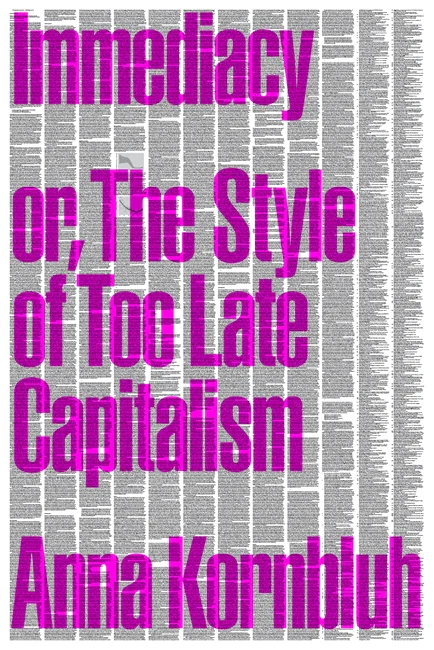The most intensely studied genocide is, without contest, the Holocaust. It’s considered by some to be the archetypal genocide, a limit case, in part because the term genocide was first applied in a legal setting during the Nuremberg trials. Our ongoing interest in Nazi crimes seems unlikely to wane, particularly as new evidence is still being released. In April, the Weiner Library in London made public the UN War Crimes Commission archive, 900GB of evidence collected to prosecute Nazi government officials. It’s a surfeit of documentation that could lead to the rewriting of aspects of Holocaust history.
Holocaust history is essential to our understanding of modern civilisation. But equally essential is the broader context of the Holocaust, its place within an historical continuum. The Holocaust can’t be fully understood without the context of the Armenian genocide, which took place three decades earlier and provided the rough blueprints of modern extermination. And neither event can be fully understood without the context of the first genocide of the twentieth century, the German military’s systematic attack on the Herero and Nama in colonial South West Africa.
Genocide as a term and a legal construct is a recent innovation. The United Nations adopted the Convention on the Prevention and Punishment of Genocide in 1948 – and this only happened, in large part, because of the efforts of one man, Polish lawyer Raphael Lemkin. Lemkin dedicated himself to the study of what he came to label genocide after learning of the destruction of the Ottoman Armenians. Barely two decades later, he found himself fleeing similar violence. Many of his family members died in the Holocaust. Lemkin’s story is full of such ironies. Another is that Lemkin came to understand genocide by studying its occurrence throughout human history; yet for decades after, cases of genocide were effectively siloed in their study. Only in recent years have genocide scholars returned to Lemkin’s groundwork to consider this aspect of human civilisation from a broader historical perspective.
This is the approach Norman M Naimark takes in Genocide: A World History, part of the New Oxford World History Series that aims to ‘investigate the total human experience’. Naimark began his career focused on modern Russian history, and after several books, turned his attention to crimes against humanity in Fires of Hatred: Ethnic Cleansing in 20th Century Europe (2001). His research has since centred on genocide, defined as acts committed with the intent to destroy identifiable groups, in whole or part. In Genocide: A World History, Naimark surveys humanity’s capacity for this specific, brutal and pervasive crime.
Genocide is distinct from broader terms such as war crimes and crimes against humanity. In Genocide: A World History, Naimark reviews cases of genocide dating to the ancient world, working through the warrior genocides committed by the Crusaders and the Mongols, to the Spanish conquest of the Americas, to what he terms the ‘settler’ genocides that occurred in North America, Africa and Australia. He draws a valuable connection between the paradigms that engendered settler genocides and the subsequent era of ‘modern’ genocides in Europe, including the Armenian genocide and the Holocaust.
Naimark also advocates for an expansion of the current UN definition of genocide to include Lemkin’s original categories of social and political groups as victims; the current definition is limited to national, ethnical, racial or religious groups. Naimark stakes his argument for the broader definition on the unmistakable similarities in motives and strategies between genocides included under the current definition and communist, anti-communist and post-Cold War genocides. In doing so, he provides a comprehensive overview of genocide’s development over the past three millennia. He writes:
Not all genocides are the same. Some are carried out in a matter of days or weeks; others can take decades. Some involve millions of people; others thousands. Some are highly centralized; others more decentralized and sporadic. Every case of genocide is in some ways unique, but it is also true that they can be grouped spatially and temporally into more or less similar kinds of murderous events. Historical periods do make a difference in the types and character of the killing involved. … Still, there is a remarkable – indeed, frightening – similarity in genocidal violence over the past three millennia in human history.
While some features of ancient violence – concubines, animal sacrifices and the salting of the earth – are now antiquated, the core characteristics of genocide remain:
Armies of men kill identifiable groups of human beings, including women, children, and noncombatants, at the command of their political leaders, who often invoke ideologies, gods, and God in their arguments for destruction. The killing is intentional, total, and eliminationist.
We can trace this pattern to Western society’s foundational histories. Naimark acknowledges that the Hebrew Bible is better viewed as a literary creation than a historical document; regardless of its factual accuracy, however, the Bible is fundamental to the Western discourse of elimination. In the Old Testament, the destruction of targeted identifiable groups was the will of God: ‘Thou shalt smite them, and utterly destroy them. … Ye shall destroy their altars, and break down their images’. The recurrence of genocidal events in the Bible set precedents for future leaders to draw on. Likewise, whether the destruction of Troy depicted in Homer’s Iliad and Virgil’s Aeneid is historically accurate is not as important as the cultural impact of those texts.
In the thirteenth century, Mongol warriors used genocide as a military strategy, targeting some cities for complete destruction so others would submit without struggle. Across the Khwarezmian Empire, for example, the Mongols executed entire populations, with the exception of artisans and craftsmen. They destroyed culturally significant buildings, and left pyramids of skulls to symbolise their victory. Mongol violence halved the population of Hungary in a single year.
The violence of the Crusaders likewise blurred into genocide at times, such as in the town of Béziers in 1209 CE, where the population was massacred under the mandate of Pope Innocent III. Catholic leaders present at the massacre wrote to the Pope:
Our men spared no one, irrespective of rank, sex or age, and put to the sword almost 20,000 people. After this great slaughter the whole city was despoiled and burnt, as Divine vengeance raged marvelously.
Like the Mongols, the Pope used his legacy of violence to threaten others. In quoting a post-Béziers letter from the Pope to the people of Milan, Naimark parenthetically adds an exclamation mark:
‘No multitude can resist the Lord of armies: leaving aside Old Testament examples [of extermination!] just as He recently subdued the heretics in Provence … so He has the power to reduce your city to nothing’.
While Naimark is only able to provide capsule summaries of case histories (the book is, in his own description, ‘short, synoptic and selective’), the value of this broad perspective is in the compelling connections he makes, and his drawing out of, as he described it, the remarkable and frightening similarity in genocides throughout recorded history. In almost all the histories Naimark covers, there are two key motivating aspects for the perpetrators: a justifying ideology combined with promises of material gain – wealth, land, women, slaves. The Mongol massacres are a notable exception; eliminationist killing seems to have had no deeper ideological justification than as a means to power, unlike the ‘holy war’ of the Crusades or the religious and racial justification of the Spanish conquistadors.
The Spanish conquest of the Americas resulted in the deaths of up to 70 million indigenous people from Columbus’s 1492 arrival in the Bahamas through the mid-1500s; some scholars consider this to be history’s most egregious case of genocide. While many died of disease, Naimark details the harsh conditions of forced labour suffered by the native populations, which exacerbated the spread and efficacy of pathogens. Meanwhile, the conquistadors’ torture and murder of the natives ‘reflected a deep-seated hostility to their victims’ very existence as human beings’.
There is debate, of course, over whether this violence can be labelled genocide. The key question is whether the conquistadors had a mandate from the church or the court to destroy entire towns. Naimark concludes that the conquistadors ‘operated in a framework that was created by the Spanish Crown’. Similarly, in what Naimark labels ‘settler genocides’ in North America, Australia and South Africa, the colonial powers hold ultimate responsibility for the exterminatory killings committed by settlers. Naimark highlights
the deep paradox in a situation in which the new European arrivals attacked and sometimes eliminated the indigenous peoples as interlopers. European settlers purveyed an entire ideological system whereby they were the natural heirs to the land of the indigenous peoples, and those peoples … were the aliens. This ideology was buttressed by ideas of race, where inferior ‘small and dark’ peoples, itinerant and ignorant, had no right to the land, even if they were to claim it in any formal way, which they often did not.
In considering specific cases on each continent, Naimark draws distinctions between genocide and ‘other forms of criminal discrimination’. He dedicates significant detail to the fate of Tasmania’s Aboriginal people, concluding:
Though divided into distinct groups, as were their cousins on the Australian mainland, the Tasmanian Aborigines could be considered a separate ethno-national unit that was slated for elimination by the settlers, supported and sometimes initiated by the local government, and were therefore victims of genocide. They were killed by disease and by the deprivation brought on by colonial settlement. But they were also massacred in large numbers over a period of several decades.
Understood on these terms, the destruction of the North American Pequot and Yuki was likewise genocide, as was the extermination of the Cape San in South Africa. The treatment of the Cherokees, in contrast, is one example better described as ethnic cleansing, as there was no intent to destroy this group. There are two clear similarities in each case of genocide: the settlers’ conception of indigenous peoples as subhuman (the Yuki were referred to as beings ‘who at least possess the human form’) and the direct benefits of extermination to the settlers, namely the acquisition of land and, with it, the promise of wealth. Naimark points to the Old Testament imagery in the description of one settler who participated in an attack on the Pequot: ‘Thus was God seen on the Mount, … burning them up in the fire of his Wrath’.
Technology engendered a sharp increase in the efficiency of mass killing in the twentieth century, the era of modern genocide. Military forces could cover greater distances faster, communications technology enabled the immediate transmission of orders, and weapons became more efficient. Modern media empowered extremist politicians to spread more effectively the hate and fear of undesirable groups. And all this came about as nation-states forged their identities on nationalism driven in part by the pseudo-science of racial hierarchy. Here Naimark raises one of the key connections of the book, namely:
the important relationship between the racialist violence of settler genocide and the subsequent development of violent state ideologies and practices [in Europe]. … In some ways, the last notable settler genocide of the pre-World War I colonial era – the killing of the Herero and Nama in German South West Africa – can also be considered the first genocide of the modern period, as the German state and the German army became directly involved.
When the Herero rebelled against their treatment by German settlers in 1904, the German military attacked not only combatants, but also women and children. Their stated intent was the destruction of the native Herero populations. The colony’s German governor protested that killing the innocent natives was a waste of good labour, and after some time the military forces were withdrawn. The conditions of the governor’s labour camps meant that they were, in reality, death camps, and so much of the population that had survived the military attacks died under German authority regardless.
Naimark notes the ‘interesting and important linkages’ between the events in German South West Africa and in the Ottoman Empire a decade later. The two cases of genocide are distinct, and to be clear, the Germans were not perpetrators of the Armenian genocide. Yet, because the Ottoman and Germans were allies in the first world war, some German military officers did become directly involved in Ottoman actions against Armenian communities.
I began with the contention that it’s difficult to understand fully the Holocaust without the context of the Armenian genocide. Most scholars of the Armenian genocide describe the violence of the final years of the Ottoman Empire as prefiguring the Holocaust. Of course there are many differences in the details of these two grave historic events. But at a broad strokes level, it’s the similarities that stand out: the enactment of laws that targeted a reviled minority, the propaganda that compared that minority to infectious bacteria, the seizure of property, the use of train lines to transport victims, the cold-blooded efficiency of government officials.
The most direct link between the Armenian genocide and the Holocaust was drawn by Adolf Hitler himself. In 1939, days before the invasion of Poland, the Nazi leader said in a speech to an assembly of his generals: ‘Who after all speaks today about the annihilation of the Armenians?’ Practically every history of the genocide references this quote, and it’s now even the subtitle of Geoffrey Robertson’s legal analysis, An Inconvenient Genocide: Who Now Remembers the Armenians? (2014).
Hitler’s reference to the destruction of the Armenians is telling. As Naimark puts it, ‘The Nazis were well aware of the Armenian genocide and of the general indifference of the world to the fate of the Armenians’. From the start of the genocide in 1915, headlines around the world detailed the horrors suffered by Armenians, with reports in newspapers from the New York Times to The Age. In the years immediately following the genocide, however, the rest of the world seemingly forgot Armenia, in part because its remaining territory had come under the control of the Soviet Union. Survivors were scattered around the world, and many fell silent. Aside from a handful of mostly inconsequential military tribunals led by the British in 1919, the Ottoman officials responsible for the genocide were never held accountable. Mustafa Kemel, also known as Ataturk, went on to establish the modern Turkish republic, and wove into its foundational myths the denial of any moral wrongdoing against any Armenians who may have once lived within its borders.
The assessment Hitler made in 1939 was accurate: the Ottomans had annihilated a minority population and gotten away with it. What was stopping the Nazis from doing the same thing? Peter Balakian includes a longer version of Hitler’s quote in The Burning Tigris: The Armenian genocide and America’s response (2003): ‘Genghis Khan led millions of women and children to slaughter – with premeditation and a happy heart. History sees in him solely the founder of a state. It’s a matter of indifference to me what a weak European civilization will say about me. … Who, after all, speaks today of the annihilation of the Armenians?’
I have no theory as to why Naimark didn’t include this part of Hitler’s quote, except perhaps that he chose to focus on the links between the Armenian genocide and the Holocaust at that moment in his text. Regardless, the connection that Hitler makes between Mongol empire-building tactics, the annihilation of the Ottoman Armenians, and his own violent ambitions emphasises the importance of the work of Naimark and other genocide scholars. The Nazis committed genocide against not only the Jews, but also the Polish population, the Roma, the Sinti, homosexuals, and the mentally and physically disabled. And while the Nazi genocide is notable for its industrial methods, Naimark reminds us that ‘the majority of the Jews were executed in groups and buried in mass graves, a method that characterized genocide from its very beginnings’.
One of the main contentions of Genocide: A World History is that the definition of genocide should include the targeting of political and social groups. These groups were part of Lemkin’s original definition of the term, but as a key member of the United Nations in 1948, the Soviet Union argued for their removal from the definition. The USSR had committed genocide against its own populations, particularly during the Holodomor, the intentional starvation of the rural Ukrainian population that resulted in the deaths of millions. Naimark’s previous book, Stalin’s Genocides (2011), explores Stalin’s targeting of political and social groups for extermination in more detail. Under Lemkin’s original definition, the mass starvation of China’s Great Leap Forward and Pol Pot’s violence against the Cambodian population likewise qualify as genocides.
Naimark explores ideological links between the Soviet, Chinese and Khmer genocides, while also considering the anti-communist genocides that marked the Cold War period. His case studies include Guatemala, Indonesia, as well as, beyond the Cold War, the genocides committed in the former Yugoslavia, Rwanda, Kosovo and Sudan. This is recent history, not antiquity. With each case history, Naimark summarises the circumstances that led to mass killing and raises some of the debates around their categorisation as genocide. The book’s broad scope and concise approach leaves little space to examine the wider contexts of any case. The ongoing Turkish denial of the Armenian genocide, for example, isn’t raised. From one perspective, this is refreshing – the overwhelming historical evidence of the Armenian genocide, some of it provided by Turkish scholars examining Ottoman archives, has proven the fact of genocide. Noting the denial in some ways legitimises it. From another perspective, the denial of the genocide is a continuation of the genocide itself, and therefore worth addressing. Despite occurring a century ago, the legacy of the genocide and its denial still have significant geopolitical impact. It was only in 2016, for example, that Germany officially recognised the destruction of the Ottoman Armenians as genocide, predictably provoking the ire of the Turkish government.
Despite this, Genocide: A World History suceeeds in Naimark’s aim of drawing out of that remarkable and frightening similarity in the cases considered. He dedicates significant detail to the use of rape as a strategy of war, and the gendered experience of victims. This emphasises one core aspect of genocide, which echoes on every page: genocide is never simply about killing. It is always accompanied by terrible violence – rape, torture, mutilation, the razing of entire communities. Throughout history, it has never been enough to ‘simply’ eliminate the dehumanised: they must be made to suffer.
I’ve studied and written about genocide for nearly a decade. My husband finds this interest morbid. Maybe this is a common perception. It came up immediately when I had the opportunity to interview Asya Darbinyan, a genocide scholar, at the Armenian Genocide Museum-Institute in Yerevan. ‘When people hear you’re studying genocide, they say, “Isn’t it too depressing?” Of course it’s sad when you read the details of how genocides were implemented, but you don’t live it.’
Darbinyan was a spirited, smiling woman in her late twenties. She hoped to one day organise university forums ‘to show genocide studies is not boring or only stressful’. Underpinning her enthusiasm was the sense that she was doing something important. The Armenian genocide happened a century ago; few of its eyewitnesses are still alive today. But in studying its history, combatting its denial and sharing her work with others as a museum guide, Darbinyan had a powerful sense of vitality, even urgency.
Considering the long history of genocide in the context of today’s geopolitics and advances in digital capability should prompt a sense of urgency. Algorithms can now determine our political, sexual and religious orientations through our online activities. For advertisers, this is an opportunity. Alongside headlines warnings of Chechen plans to ‘eliminate’ the country’s gay population, however, the opportunities become unsettling. As Genocide: A World History makes clear, genocide has been driven by technological advances as much as any other area of human activity. Unless we come to better understand our capacity for genocide and address it openly and directly, there is no reason it won’t continue to do so.







